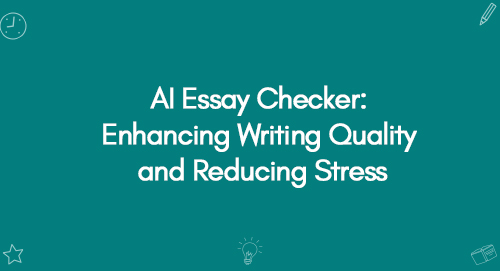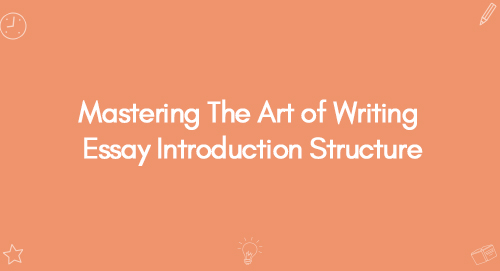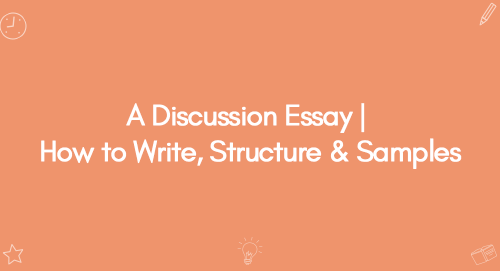How To Write A Formative Essay | Importance in Advancing Academic Growth
How To Write A Formative Essay | Importance in Advancing Academic Growth

How To Write a Formal Essay | A Comprehensive Guide
November 23, 2023
How to Write Formative Assessment | A Guide for Educators
November 28, 2023Formative essays refer to writing tools that identify and assess gaps in learning, challenges, and misconceptions. It focuses on learning and improvement throughout a course, emphasising reflection, while other essays serve diverse purposes, such as storytelling or presenting arguments, often with a more strong stance.
Learn How to Write an Argumentative Essay
A formative essay offers effective techniques for shaping learning and is not just about getting a grade but understanding where students are doing well and how they can get better. Students can turn the formative essay experience into a valuable learning experience and improve their understanding of the subject matter by following these guidelines.
Understanding Formative Essays: A Guide to Student Success
A formative essay acts as a critical step in a student's academic journey, providing helpful feedback and monitoring progress throughout a course. Recognising the importance of this assessment, here are some tips to navigate the process effectively:
1. Start Early: Cultivate Ideas and Seek Clarification
Rather than starting at the computer, the process of a formative essay begins in your mind. Start the brainstorming process early so that ideas may develop and grow. Early consideration also allows for opportunities to request clarity if particular elements of the assignment remain unclear.
2. Be Strategic: Connect Formative and Summative Assessments
Consider the academic situation, particularly the summative assignment at the end of the term. By carefully selecting a formative essay topic, you can expand on previous research and develop an integrated narrative that covers the term.
3. Plan: Chart Your Writing Course
Setting deadlines for each stage of the writing process—research, drafting, and revision allows you to divide the work more fairly and promotes a stress-free writing environment.
4. Prioritise Feedback: A Continual Learning Loop
Formative essays are a part of a progression. When one integrates feedback from a previous project into current projects, every essay becomes a platform for growth.
Formative Essay Example
Here, is an example of a formative essay
Title: The Impact of Climate Change on Biodiversity
Introduction
Climate change has emerged as a significant global concern with severe consequences, in recent times. This formative essay seeks to clarify the significant impact of environmental changes on the fragile balance of ecosystems by examining the complex relationship between biodiversity and climate change.
Body:
1. Understanding Climate Change:
Climate change, as manifested by rising temperatures, changed patterns of rain, and extreme weather conditions provides an example of the environmental changes under discussion.
2. Biodiversity: A Delicate Web of Life:
Biodiversity, or the complex interaction of numerous species in an ecosystem, contributes to ecosystem resilience, production, and adaptability. Analysing its constituents, ranging from plants to wildlife reveals the complexity of life on our planet.
3. The Ripple Effect:
Climate change triggers a domino effect on biodiversity. Shifts in temperature and precipitation patterns disrupt habitats, affecting the distribution, behaviour, and life cycles of countless species.
4. Case Studies:
Examining specific case studies, such as the impact of melting ice on polar bear habitats or the bleaching of coral reefs due to rising sea temperatures, provides practical examples of the complicated relationship between biodiversity and climate change.
5. Ecosystem Services at Risk:
Essential environmental functions like pollination and water purification are made possible by biodiversity. Analysing how these services are affected by climate change highlights the importance of addressing environmental issues.
Conclusion:
As this formative essay explores the relationship between climate change and biodiversity, it becomes evident that the consequences extend beyond individual species. The delicate web of life, woven over millennia, faces unprecedented challenges. This essay, still in its formative stages, aims to evolve into a comprehensive exploration, incorporating additional research and insights to contribute meaningfully to the discourse on environmental conservation.
Beyond the Student Desk: The Role of Formative Assessment in Teaching
Teachers use formative assessment to adjust their teaching strategies and assess each student's progress individually, creating a dynamic and flexible learning environment. This approach breaks down the complexities of academic work and the competency level achieved, offering parents and students useful information.
Diverse Forms of Formative Assessment: Tailoring Evaluation to Learning Styles
There are many different ways to do formative assessment, including making lists, promoting student involvement, and integrating reviews from other students. These methods support different learning styles and encourage a comprehensive understanding while assessing students' comprehension of the material covered in a lesson.
Unlocking Educational Growth: The Crucial Role of Formative Essays in Shaping Continuous Learning
Formative essays play a pivotal role in education, serving as dynamic tools that go beyond conventional assessments. Understanding what a formative essay is and how to start it is key to unlocking its educational significance. It goes beyond the typical formative and summative assessments, providing a unique opportunity for students to reflect on their progress. Knowing how to write a formative essay plan is equally essential, as it guides students in organising their thoughts and ideas. Formative essays contribute to a continuous learning process via writing reflective essays for students to evaluate their strengths and areas for improvement. In the broader educational context, formative and summative assessments coexist, with formative assessment examples showcasing ongoing learning, while summative assessments evaluate overall understanding at the end of a term. Embracing formative evaluation, educators gain insights into individual student needs, enabling them to adapt teaching techniques for enhanced learning and development. In essence, formative essays bridge the gap between theory and application, fostering a culture of continuous improvement in the educational journey.
Conclusion
In conclusion, formative essays appear to be essential tools for teachers to modify and advance their methods of instruction, as well as for students to track their progression and improve learning results. They play a crucial role in the process of teaching and learning by highlighting both the areas of strength and opportunities for improvement. Formative essays tend to be foundations that guide teachers and students in the direction of greatness as the educational environment evolves.















